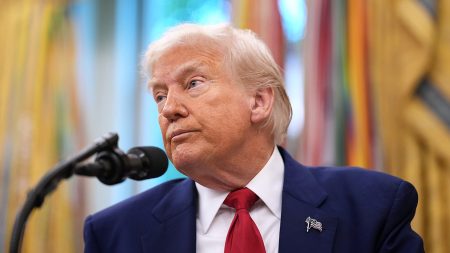Paragraph 1: The Genesis of a Continental Quarrel
The relationship between the United States and Canada, typically characterized by amicable cooperation and deep economic integration, experienced an unexpected jolt in the early days of the Trump presidency. President-elect Donald Trump, known for his unconventional communication style, publicly questioned the nature of US-Canada relations, alleging significant US subsidies to its northern neighbor and suggesting, provocatively, that many Canadians desired annexation as the 51st US state. These pronouncements, delivered via social media, were coupled with Trump’s threat to impose substantial tariffs on Canadian imports, ostensibly in response to unresolved trade and immigration disputes. This combination of rhetorical challenges and concrete policy threats set the stage for a period of heightened tension between the two nations.
Paragraph 2: Trump’s Economic Nationalism and the Canadian Conundrum
Central to Trump’s critique of the US-Canada relationship was his focus on trade imbalances. He publicly cited figures, later disputed, suggesting a massive US trade deficit with Canada, exceeding $100 billion. This emphasis on trade deficits, a recurring theme in Trump’s economic pronouncements, reflected his broader "America First" policy agenda, which prioritized domestic industries and sought to renegotiate trade relationships deemed unfavorable to the United States. Canada, with its deep economic ties to the US, found itself unexpectedly in the crosshairs of this protectionist policy shift. The suggestion that Canada might consider statehood, reportedly made during a meeting with Canadian Prime Minister Justin Trudeau, underscored the unconventional and arguably coercive nature of Trump’s approach to bilateral relations.
Paragraph 3: The Interdependence of Two Economies
Trump’s tariff threats exposed the deep interdependence of the US and Canadian economies, highlighting the potential for significant disruption on both sides of the border. Canada, a major supplier of crucial resources to the US, including crude oil, electricity, steel, aluminum, uranium, and various critical minerals, plays a vital role in supporting American industries and defense capabilities. The daily cross-border flow of billions of dollars in goods and services underscores the magnitude of economic activity generated by this bilateral relationship. Moreover, Canada represents the primary export market for a substantial number of US states, demonstrating the economic benefits derived from this interconnectedness.
Paragraph 4: Trudeau’s Diplomatic Gambit
Faced with the prospect of significant economic repercussions, Canadian Prime Minister Justin Trudeau undertook a diplomatic mission to Mar-a-Lago, Trump’s Florida resort, to engage directly with the incoming president. The meeting, while providing an opportunity for dialogue, reportedly witnessed tense exchanges, particularly regarding trade imbalances. Trump’s suggestion that Canada might consider statehood as a solution to its economic vulnerabilities further amplified the unusual dynamic between the two leaders. Trudeau’s efforts to address the brewing trade dispute highlighted the Canadian government’s recognition of the potential damage posed by Trump’s protectionist policies.
Paragraph 5: Deconstructing the Subsidy Claim and Statehood Suggestion
Trump’s claim of substantial US subsidies to Canada lacked supporting evidence and was widely disputed by economists and analysts. The figure of $100 million annually cited by Trump did not align with any known government programs or financial transfers between the two countries. Similarly, the assertion that many Canadians desired statehood appeared to be based on anecdotal evidence, lacking any substantial polling data or public sentiment analysis to support it. These claims, while generating headlines, ultimately detracted from the more substantive policy debates surrounding trade and economic relations.
Paragraph 6: The Unpredictable Future of US-Canada Relations
The early interactions between the Trump administration and the Canadian government signaled a potentially turbulent period in US-Canada relations. Trump’s unorthodox approach to diplomacy, coupled with his focus on protectionist trade policies, created uncertainty and concern within Canada. The deep economic integration between the two countries, while offering mutual benefits, also presented a potential vulnerability in the face of trade disputes. The future of the relationship hinged on the ability of both sides to navigate these challenges and find common ground despite differing economic priorities. The early exchanges, however, provided a glimpse into the potential for friction and the need for careful diplomatic maneuvering to preserve the longstanding partnership between the two North American neighbors.










